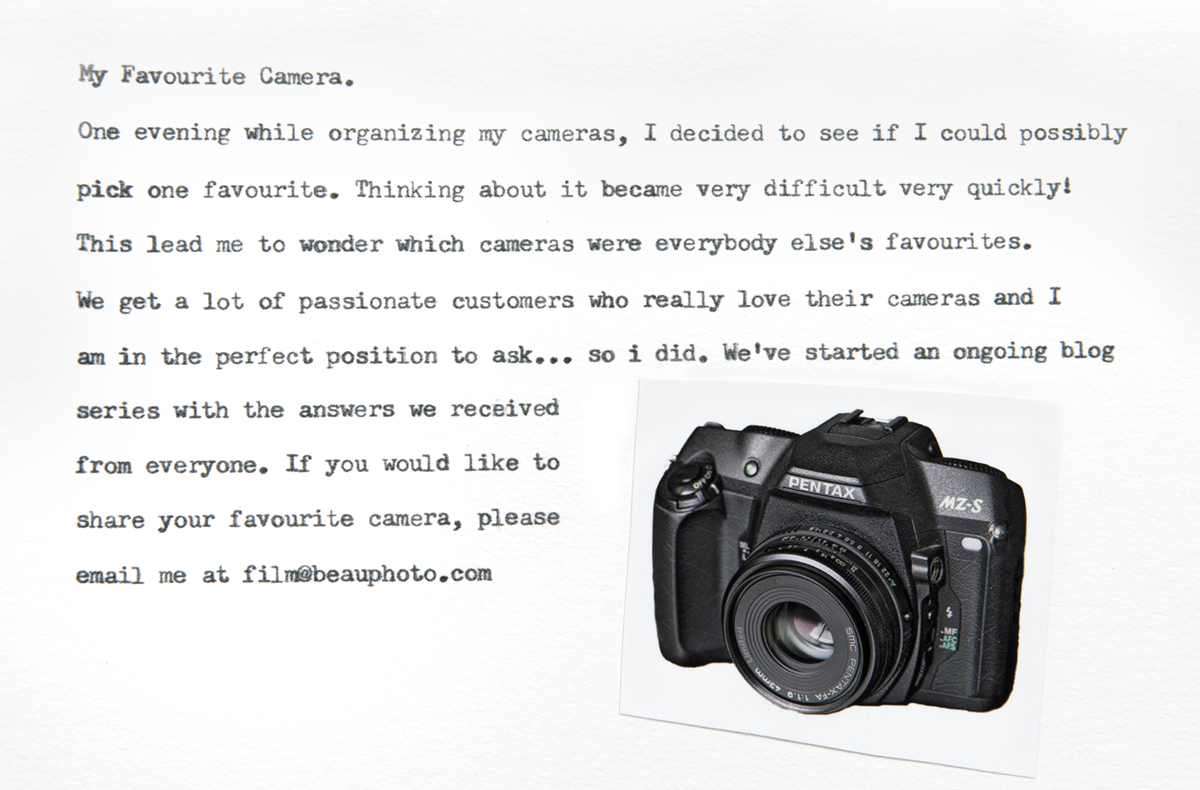When asked, John said:
1. If you were to choose a favourite film camera from your collection which would it be?
I probably have 30 film cameras, including a few very high end ones, but this is actually a pretty easy choice. My favourite is a 1955 Kodak Retina IIIc (that’s a small “c”; because yes there’s a difference between the small “c” and large “C” models.) It’s a 35mm rangefinder with interchangeable lenses (technically, lens components) and an integrated light meter.
2. How long have you owned this camera?
I’ve had this camera for three years now.
3. How did you come to own this camera?
I found it towards the end of the day sitting on a table at the 2014 Vancouver Camera Swap Meet. At the time I didn’t know a lot about Kodak Retina cameras, but I did know they were considerably higher quality than the US made Kodaks (Retinas were designed and made at a German company which had been bought by Kodak to get into the high end camera market). $25 seemed like a good deal. I took it home, and without any servicing put a roll of B&W in it, went out and shot and developed the roll. I was blown away by the quality of the images. Subsequently, I did some research and found out that yes, I indeed had gotten a great deal on this camera. I’m still puzzled as to why nobody else had bought it! I also discovered that there’s a fellow in New Zealand who specializes in servicing Retinas, so sent it off to him for a full service.
4. What things do you enjoy most about this camera?
I’ll start with the feel. It’s a relatively compact camera with a folding lens, and it just feels very solidly built without being very heavy. All the edges are nicely rounded, the controls are in intuitive places, and you don’t have to use any odd hand positions in focusing and shooting (yes, I’m looking at you, Contax!)
Secondly, the optics. Although it’s a folding lens, it’s a solid frame on the folding mechanism with a solid, positive lock in open position so there’s no drift or shifting of the lens between times you open it. The quality of the optics on the base 50 mm lens, the 80mm lens component, and the 35mm f/4 lens component is absolutely second to none. I’ve done side by side comparisons against Leica bodies sporting equivalent multi-thousand-dollar Zeiss lenses, with the same batch of film in both cameras and rolls developed in a single tank, and when you show folks the paired images side by side, the Retina images are superior – they’re just crisper and “livelier”, right into the very corners. (The 35mm f5.6 lens component is not as good, although it’s still acceptable for most photography). A couple of caveats on this though – first, because it’s lens components and not strictly full lenses which interchange, note that for the 50mm the serial numbers on detatchable front element and fixed rear element should match; they’re factory aligned as a pair. If the front element has been swapped, it will require a realignment to get full performance, and I don’t think this is a DIY job for most people. Second, there’s two types of lenses – the Retina Curtar-Xenon and Retina Heligon-C. These don’t interchange, so you have to find the elements which match your 50mm type.
Third, the metering system. It’s selenium cell based (no need for batteries, and at least on mine, still dead on accurate nearly 70 years after it was made). It’s an uncoupled match-needle system which reads out in EV. You then dial the lens to match the EV in 1/2 values (plus or minus if you want over/ under exposure), and then you can instantly either chose to shoot in aperture priority or shutter priority.
Finally, I like the thought process in using this camera. For me, a lot of the enjoyment comes in taking the photo, in framing it and thinking about the lighting and composition. Using a fully manual camera requires you to really immerse yourself in all of this. If you are using the 35 or 80 mm lenses it’s even more complex, since they’re not rangefinder coupled (the 50mm is). So, you have to apply a conversion factor but it’s clearly labeled on the lens dial so it’s still simple to do, and while some people find this extra step a nuisance, for me it’s just part of the quirk of using this camera and being in the moment of taking the image. Since I have the “c” and not the “C”, I even have to use an auxiliary shoe-mounted viewfinder if I want to use either the 35 or 80 mm lenses, too – complete with its own parallax adjustment dial set to subject range to get correct framing. This isn’t a camera for fast action shots, but for contemplative shooting, it’s a joy to use.







